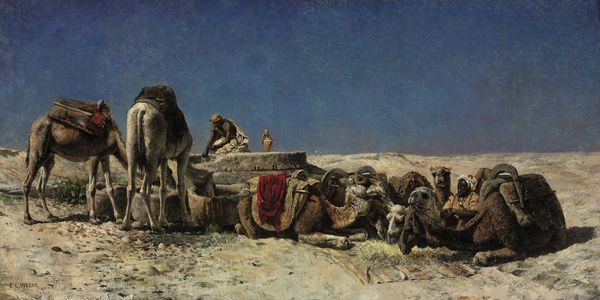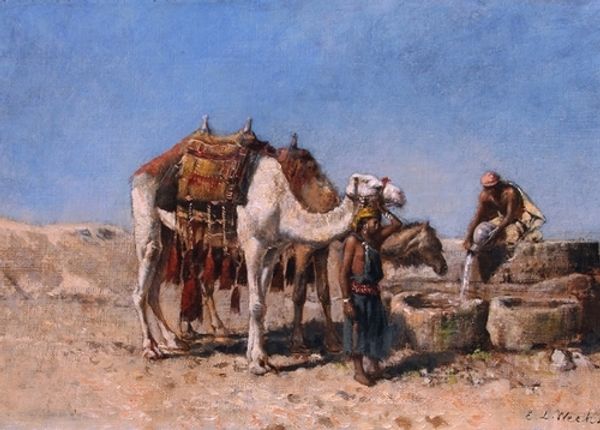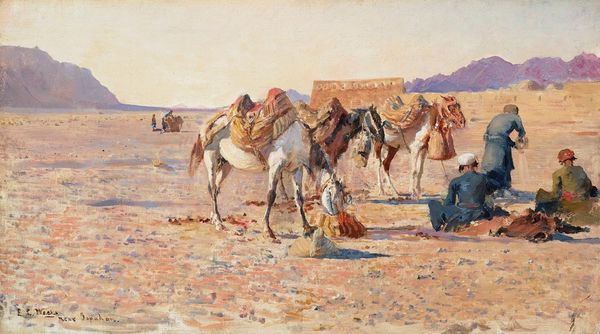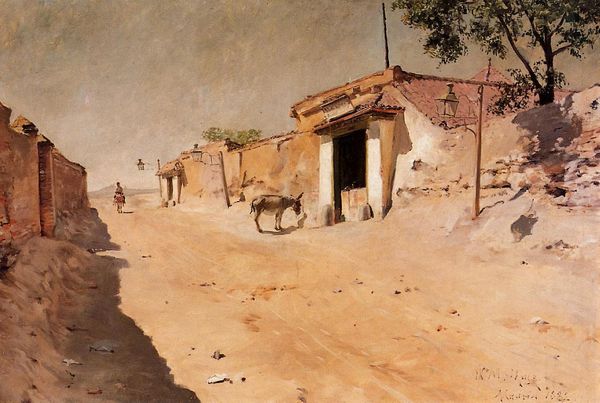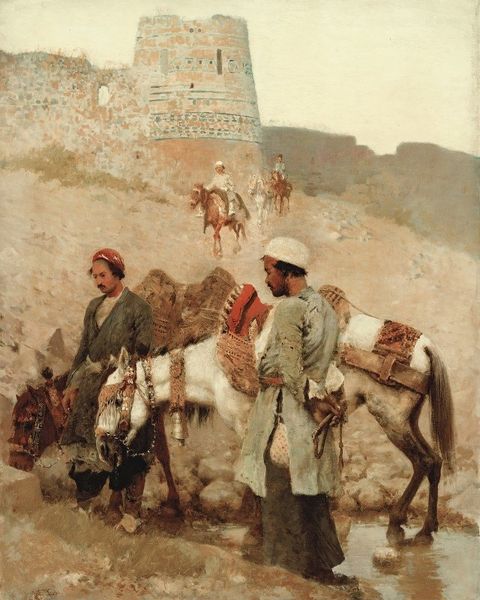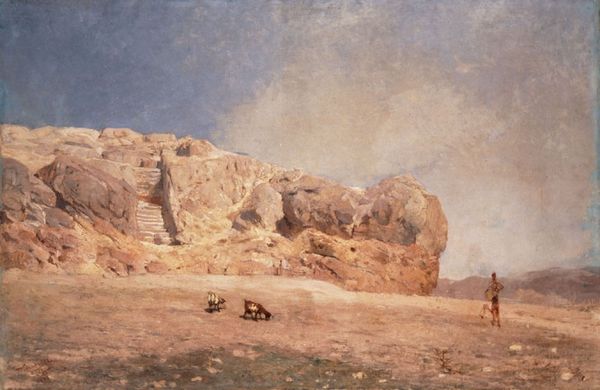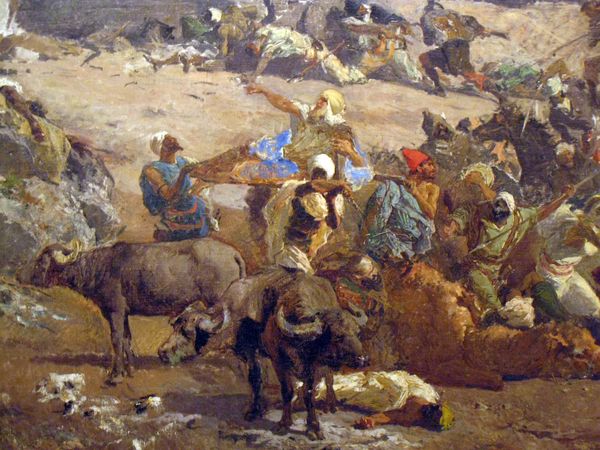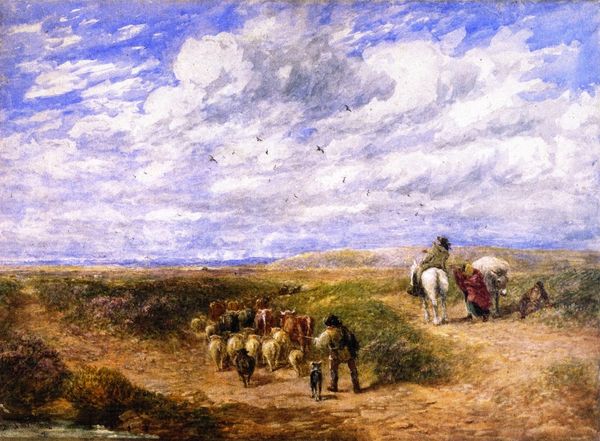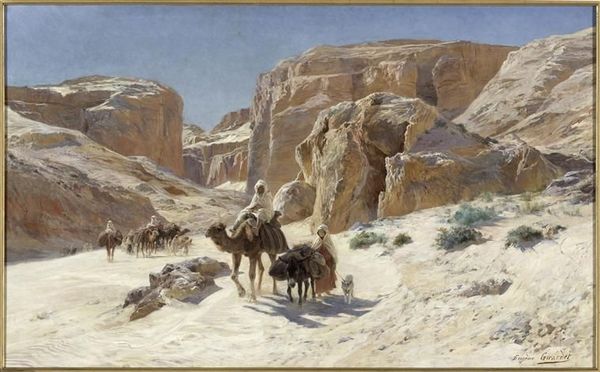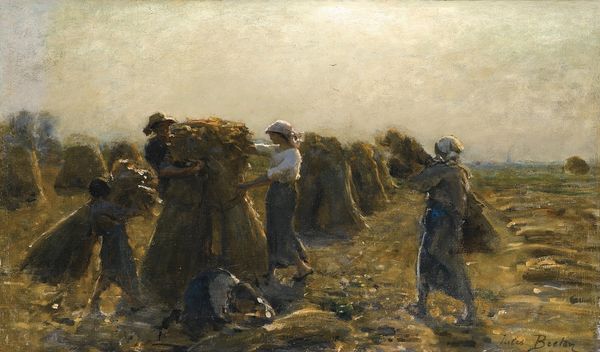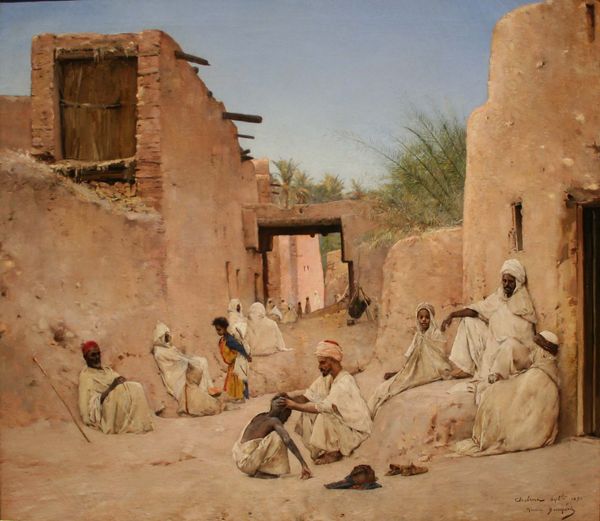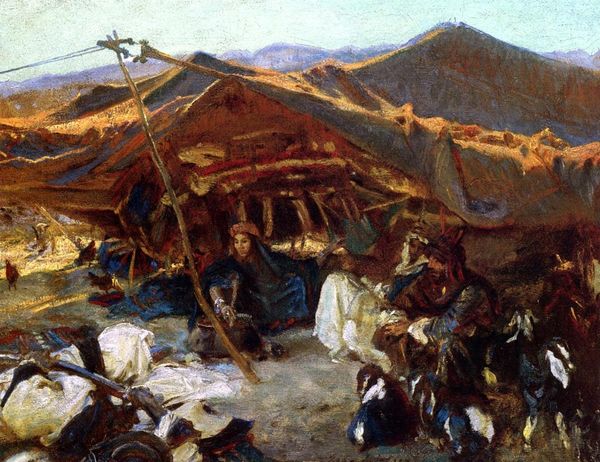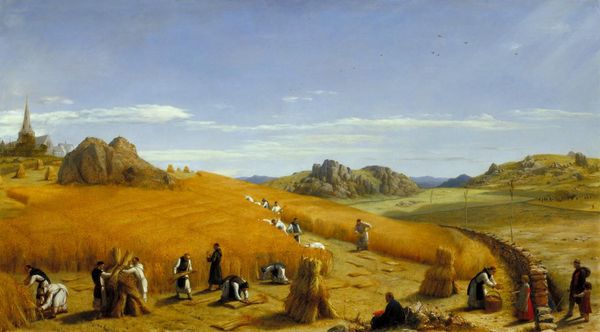
#
abstract painting
#
house
#
charcoal drawing
#
possibly oil pastel
#
charcoal art
#
oil painting
#
acrylic on canvas
#
underpainting
#
painting painterly
#
charcoal
#
watercolor
#
building
Dimensions: 81.3 x 52 cm
Copyright: Public domain
Curator: Welcome! We’re standing before Willard Metcalf's "Arab Encampment, Biskra," created in 1887. It portrays a scene of daily life in what appears to be a nomadic settlement. Editor: My first impression is of a very textural, tactile quality to the landscape. The colors are earthy, almost monochromatic, which gives it a feeling of the dry, sun-baked land. I’m immediately drawn to how Metcalf has used the paint itself to evoke the materiality of the desert. Curator: Indeed. Considering Metcalf's other works and his artistic development within American Impressionism, this painting offers a critical perspective on orientalism. He's not merely depicting a picturesque scene; he's also showing a community existing within particular economic and political structures dictated by colonization. Who benefits and at what cost from the access to raw materials here? Editor: Exactly. Look at the way the tents are constructed—simple, practical, from readily available materials, in contrast to the commodities the colonizers would bring. The chickens foraging, the camel as a beast of burden... everything speaks to resourcefulness and necessity, forming a striking portrait of how this community meets their material needs. It's almost like a record of consumption and how production functions at a local level. Curator: And it’s vital to consider gender roles as well. Who does the work within this camp? Where do the women sit in relation to the structures and men? Metcalf doesn't provide clear answers, but it allows us to ask critical questions about the division of labor and the social construction of gender within this specific cultural context. Editor: I agree, but I'm equally captivated by the camels. How critical they are in the scene for transportation. What did it take to feed and water these animals? Considering the date, one must factor in animal labor too. What stories do those saddles hold? They have weight. They have heft. Curator: That's a refreshing material consideration of Metcalf's Orientalist piece. His canvas gives rise to our analysis across production and cultural theory. It allows us to better investigate those camels’ social burden across time. Editor: Seeing Metcalf through both our perspectives brings layers of complexity that really enrich this scene. Curator: Agreed. It allows us to appreciate it and consider it beyond surface-level beauty.
Comments
No comments
Be the first to comment and join the conversation on the ultimate creative platform.
